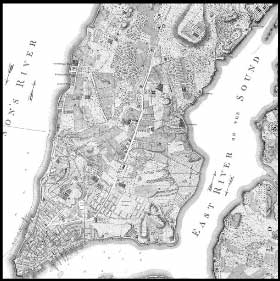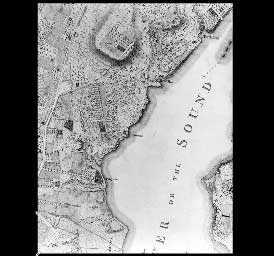



belongs a Swamp stored with Wood, which if cleared may be made good Meadow- Land; with a convenient Landing to the East River.
In 1747, John Watts, a wealthy merchant and civic leader in the British colony of New York, purchased the property. Watts had his primary residence in a townhouse on Pearl Street and purchased this land outside the city to create a country estate that he called Rose Hill after his family's ancestral home in Scotland. An estate house and farm buildings were constructed on what is now 24th Street, just west of Second Avenue. The surrounding land was cleared and leased to local farmers.
Rose Hill was bordered by other estates and farms. To the northeast was the farm of Jacobus Kip. An inlet from the East River at the present site of 34th Street was known as Kip's Bay, which is now the name of the surrounding neighborhood. To the south, most of the land remained in the Stuyvasant family, which gave its name to the present Stuyvasant Square neighborhood around Second Avenue and 16th Street and to the Stuyvasant Town housing development east of First Avenue. The western boundary of Rose Hill was formed by Bloomingdale Road, which is today Broadway. Where Broadway and 23rd Street now meet was the beginning of the Eastern Post Road, which ran in a northeasterly direction to the northern part of Manhattan where it crossed into the Bronx and served as the main road to Boston. The Eastern Post Road bordered Rose Hill on the north, dividing it from the estate of Robert Murray, which lent its name to the neighborhood of Murray Hill.